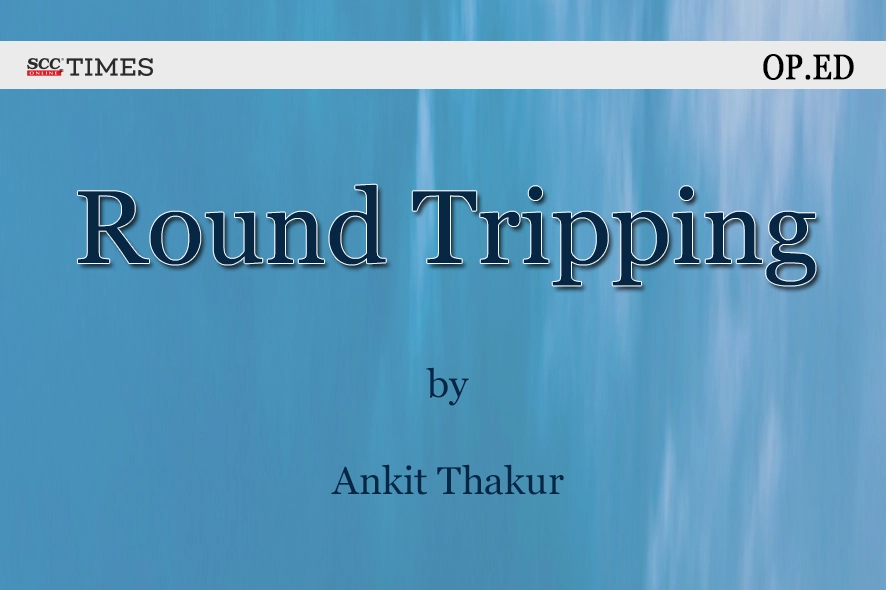Overview
The concept of “round tripping”
Round tripping is one amongst other dimensions of foreign direct investment (FDI). “Round tripping involves funds from an entity in one economy being invested in an entity resident in a second economy, that are then invested in another entity in the first economy.”1 In other words, round tripping is a particular event where fund investments in a special purpose entity (SPE) in another economy are invested back as pass through funds into the home economy. Special purpose entity (SPE) or vehicle, is a tag directing towards a flexible legal arrangement that takes in “any or all of low or concessional tax rates, speedy and low-cost incorporation, limited regulatory burdens, and confidentiality”.2
The ultimate end of round tripping is an investing economy being its own host economy. The objective is interlinked with incentives such as tax and fiscal benefits of the investing economy for outward or inward direct investment (DI).3 The other motivating incentives involve safety and risk administration of capital, access to better financial services, etc. Prior to its return to the investing economy, the route of such DI can be linked to multiple economy.
From the point of view of investing economy, generally there are two types of FDI courses deemed as round tripping4: (i) domestic investment masked as foreign investment via non-resident SPE; and (ii) channelling FDI funds via local SPE.
Typically, round tripping happens in a series of three phases: (i) outbound transfer; (ii) roundtrip transaction; and (iii) inbound transfer. Often associated with money-laundering schemes or financial crimes, the process involves moving funds out of the source economy through a series of transactions structured in a way to obfuscate the source of such funds. Following such complex arrangement, the funds are then reintroduced in the system by means such as manipulative trade practices, granting them the impression of being legitimate and received via legal means. Lastly, the funds are reinstated into the source economy bearing a legal impression and legitimate track record.
Incentives behind round tripping5
Tax and fiscal benefits
Several economies provide appealing preferential policies for FDI which include appropriate administrative support, constructive land use privileges, low taxation, etc.
Safeguarding ownership rights
Infrastructure for protection of ownership rights is not duly settled in several economies which further motivates enterprises to station their wealth overseas in economies with better legal and institutional backdrops for safeguarding ownership rights.
Anticipations regarding exchange control and exchange rates
To enhance the flexibility in foreign exchange administration, prospects on fluctuations of exchange rate and control cause round tripping in several economies.
Improved financial services
As part of the process for the procurement of improved financial services via overseas listing of companies, round tripping forms part of FDI of the investing economy.
Indian perception of round tripping
Loopholes under the legacy framework
The prospect of “round tripping” used as a tool for illicit practices such as money laundering raise concerns for market regulators. Reserve Bank of India’s (RBI’s) perception of “round tripping” is overseas investment in entities which already have invested in an Indian company. The challenge arouses when there exists a potential investment opportunity in overseas entity which had an Indian linking via subsidiary or Indian investor at the core.
The erstwhile regime did not define and was unable to articulate any prohibitory measure against round tripping and the same was pursued by RBI and regulated it under Regulation 6(2)(ii) of the Foreign Exchange Management (Transfer or Issue of Any Foreign Security) Regulations, 20046 by allowing direct investment in overseas joint venture or wholly-owned subsidiary involved in bona fide business operations.
Changes in the legal framework
Superseding the erstwhile regime, RBI introduced regime to deal in overseas investment including the Foreign Exchange Management (Overseas Investment) Rules, 202277 (OI Rules), the Foreign Exchange Management (Overseas Investment) Regulations, 20228 (OI Regulations), and Master Directions — Overseas Investment, 2024 (OI Directions)9, which adds in express provisions regarding round tripping.
Under clause (3) of Rule 19 of the OI Rules, it is expressly mentioned that,
No person resident in India shall make financial commitment in a foreign entity that has invested or invests in India, at the time of making such financial commitment or at any time thereafter, either directly or indirectly, resulting in a structure with more than two layers of subsidiaries.
The same has been reaffirmed under clause (2) of Provision 20 (Restrictions and Prohibitions) of the OI Directions specifying,
The financial commitment by a person resident in India in a foreign entity that has invested or invests into India at the time of making such financial commitment or at any time thereafter, either directly or indirectly, resulting in a structure with more than two layers of subsidiaries is not permitted in accordance with Rule 19(3) of the OI Rules. It is provided that no further layer of subsidiary or subsidiaries shall be added to any structure existing with two or more layers of subsidiaries post notification of the OI Rules/Regulations.
Where the term subsidiary is defined under clause (y) of Rule 2 of the OI Rules as,
“Subsidiary” or “step-down subsidiary” of a foreign entity means an entity in which the foreign entity has control.
And as defined under clause (c) of Rule 2 of the OI Rules, by control it means,
the right to appoint majority of the directors or to control management or policy decisions exercisable by a person or persons acting individually or in concert, directly or indirectly, including by virtue of their shareholding or management rights or shareholders’ agreements or voting agreements that entitle them to ten per cent or more of voting rights or in any other manner in the entity.
Loopholes in the current framework10
Notably, the viewpoint for assessing, “two layers of subsidiaries” give way to another ambiguity — should it be calculated in terms of Indian entity or foreign entity which would make the second layer, the step-down subsidiary of an Indian entity or foreign entity respectively.
Furthermore, the line of control that could be implemented by an Indian entity in the foreign entity is considerably short as could be observed from Para 1(2)(i) under Schedule III the OI Rules,
(2) A resident individual may make or hold overseas investment by way of,—(i) ODI in an operating foreign entity not engaged in financial services activity and which does not have subsidiary or step-down subsidiary where the resident individual has control in the foreign entity:
Conclusion
Where at one hand, caution needs to be practised by the global investors, on the other hand, regulators need to be cautious about investments made turning into round tripping. The concept is no new to the world, yet the power of market regulator needs to be exercised in a way to wreck round tripping motivated by the object of tax evasion or money laundering whilst also establishing practices which leads the investment in and outflow smoothly.
Although what the erstwhile regime lacked at addressing, the current framework recognised it and mentioned expressly. The process involved in round tripping can be complex enough to conceal the source of funds going through multiple systems and transactions.
The caution can be practised by global investors assessing the investments in India and Indian entities planning to invest overseas by considering if the moderations under OI Rules apply to them or approval from RBI is required for their investments.
*LLM (Corporate & Financial Law and Policy), O.P. Jindal Global University, Sonipat, Haryana.
1. International Monetary Fund, Balance of Payments and International Investment Position Manual (6th Edn., International Monetary Fund, 2010) Para 6.46.
2. International Monetary Fund, Balance of Payments and International Investment Position Manual (6th Edn., International Monetary Fund, 2010) Para 4.50.
3. Valdivia-Velarde, Eduardo and Razin, Tamara, Balance of Payments Manual, Sixth Edition Compilation Guide, (International Monetary Fund, 2014) Para A4.37.
4. International Monetary Fund, Balance of Payments Textbook (International Monetary Fund, Washington DC, 2005).
5. International Monetary Fund, Balance of Payments Textbook (International Monetary Fund, Washington DC, 2005).
6. Foreign Exchange Management (Transfer or Issue of Any Foreign Security) Regulations, 2004, Regn. 6(2)(ii).
7. Foreign Exchange Management (Overseas Investment) Rules, 2022.
8. Foreign Exchange Management (Overseas Investment) Regulations, 2022.
9. Reserve Bank of India, Master Directions, Overseas Investment, Master Direction No. 15/2024-25 (Issued on 24-07-2024).
10. Rabindra Jhunjhunwala & Sushmita Som, “Changes in India’s Overseas Investment Framework: Addressing the Round-Tripping Dilemma”, 2023 SCC OnLine Blog Exp 47.



